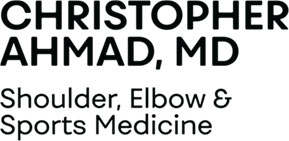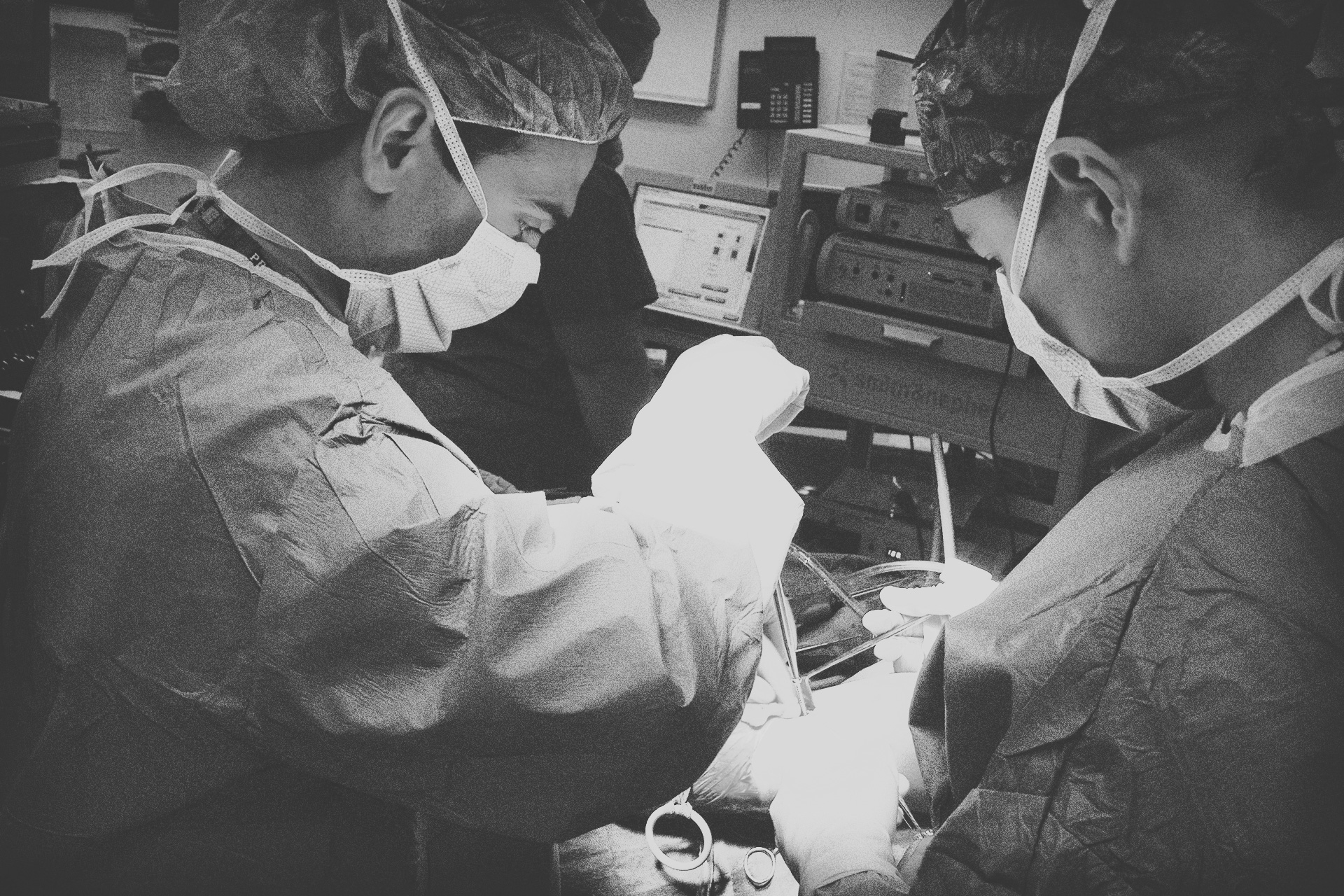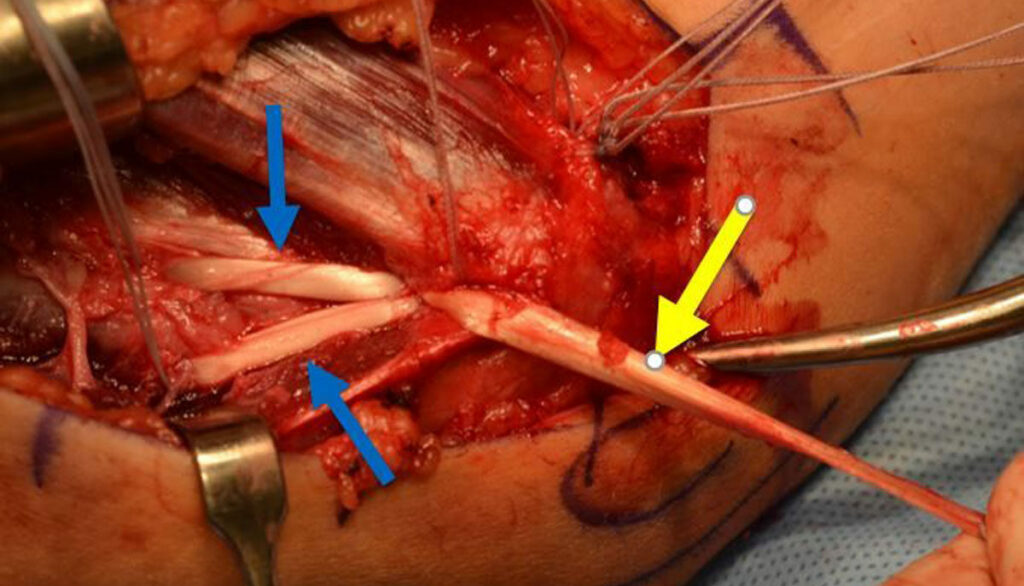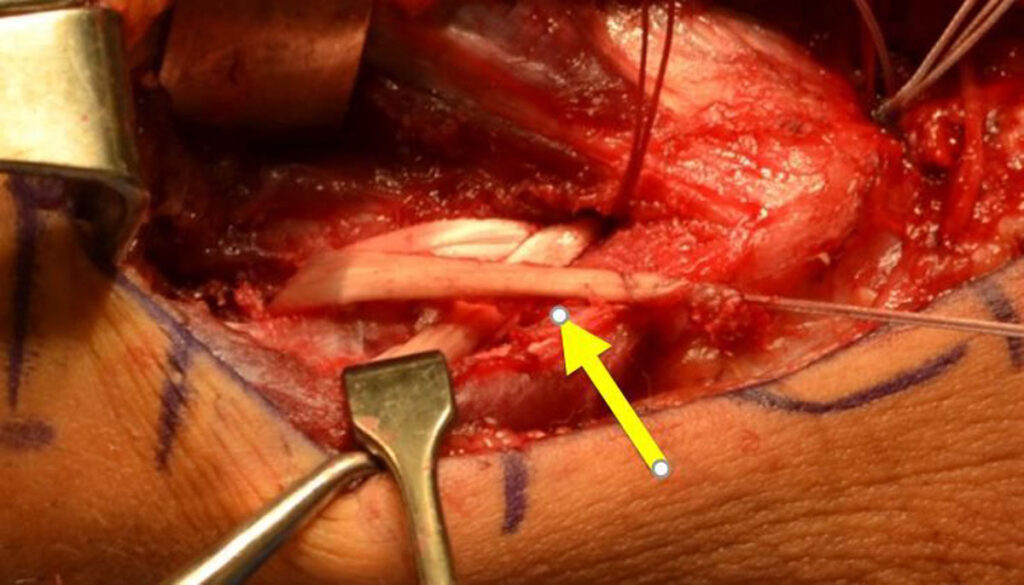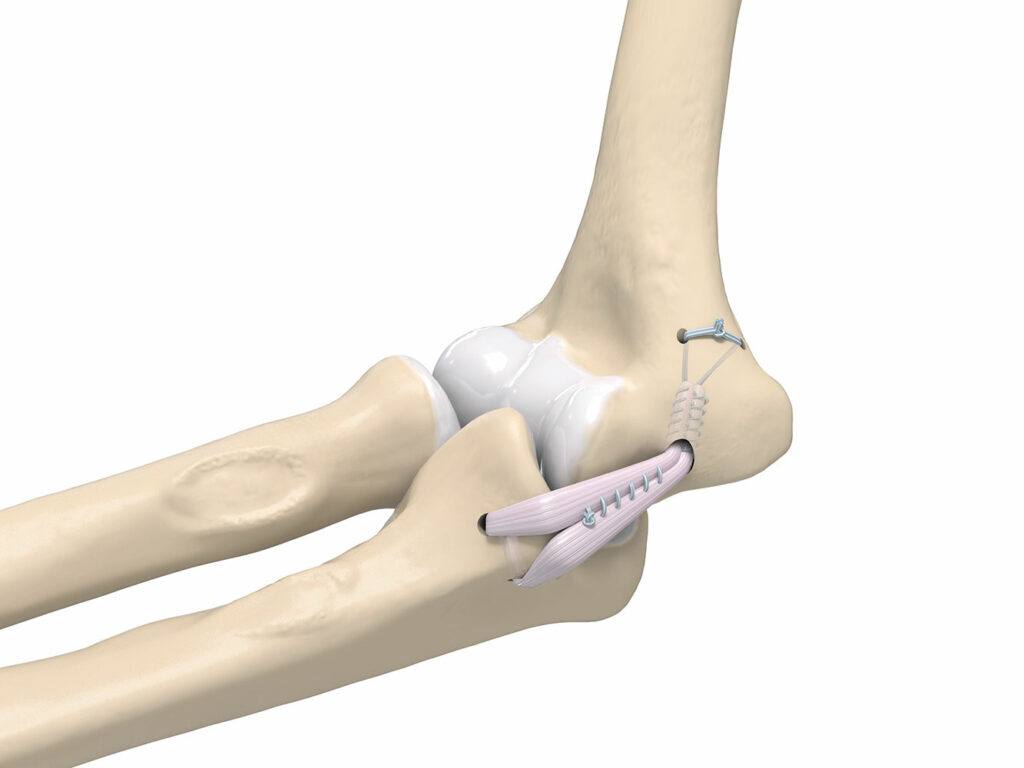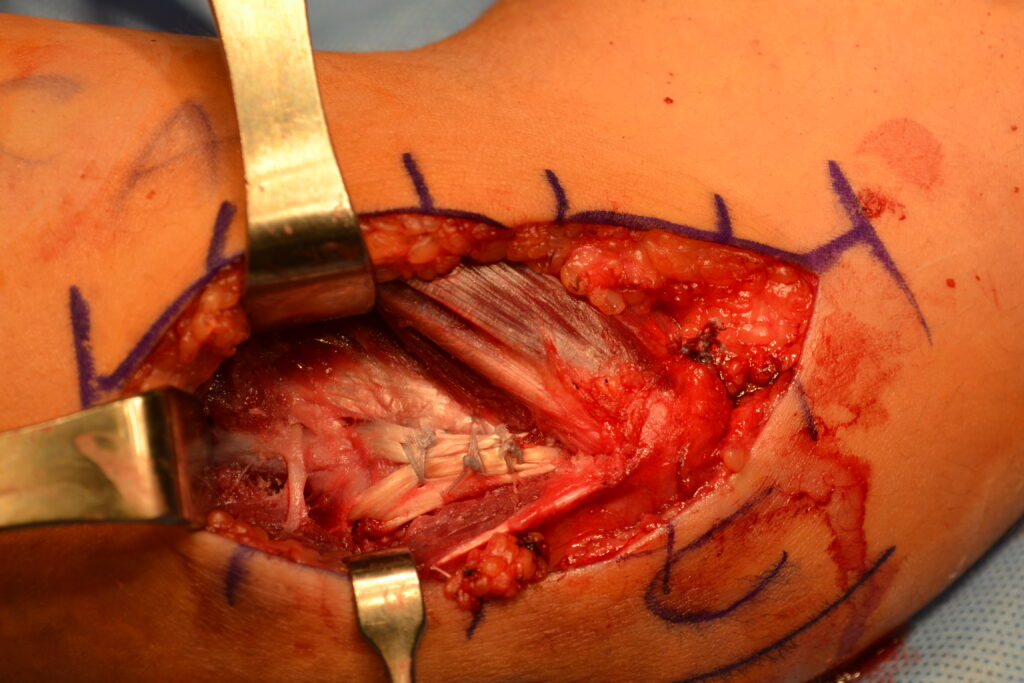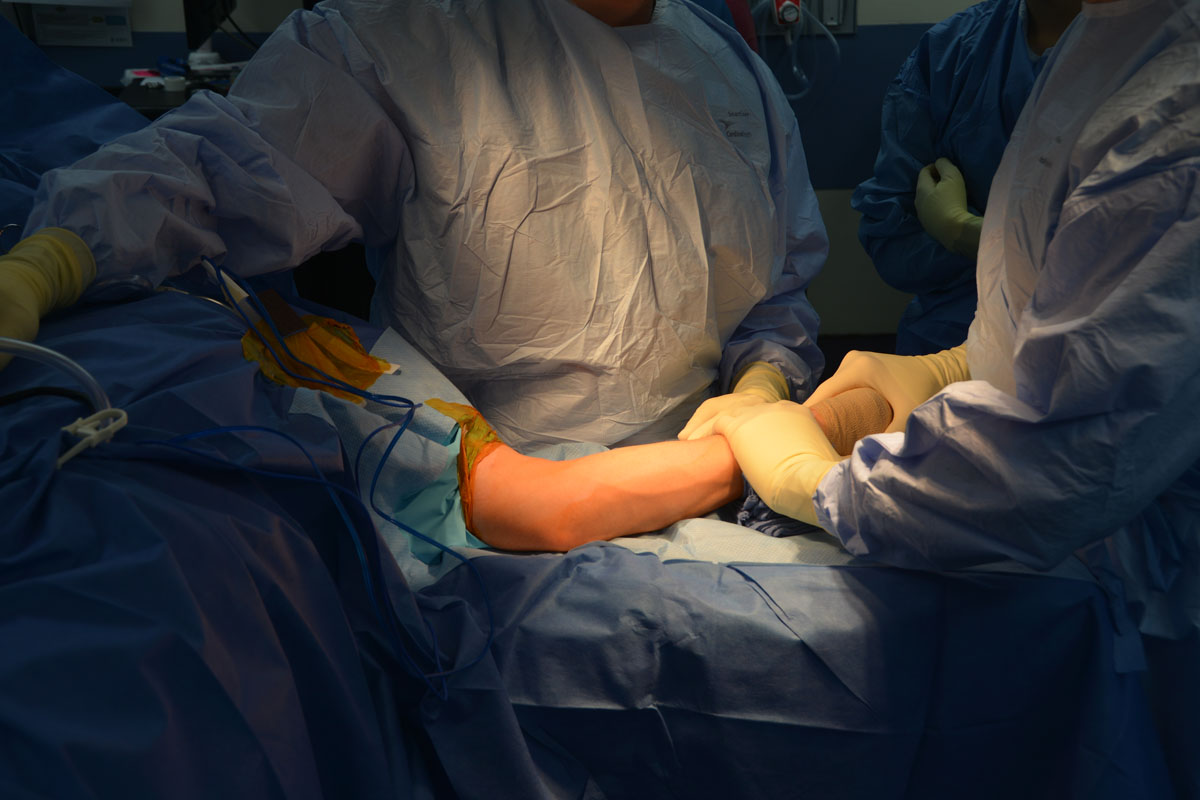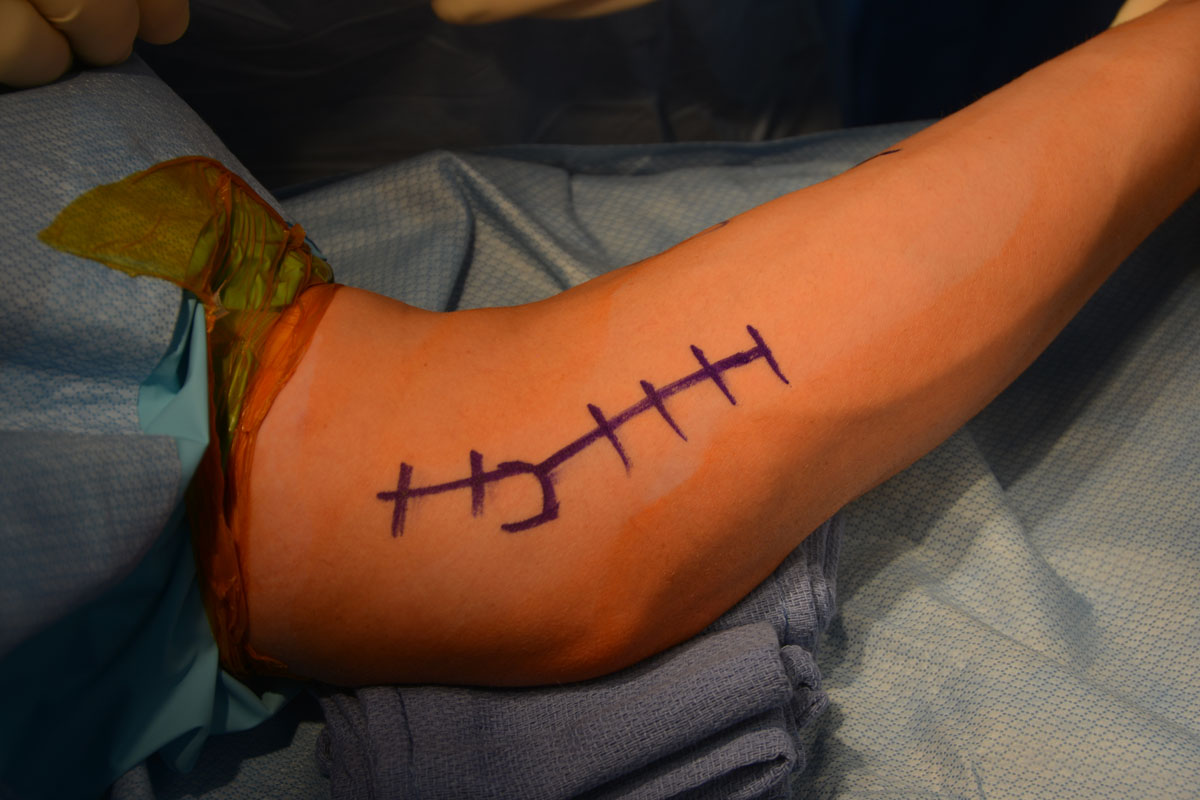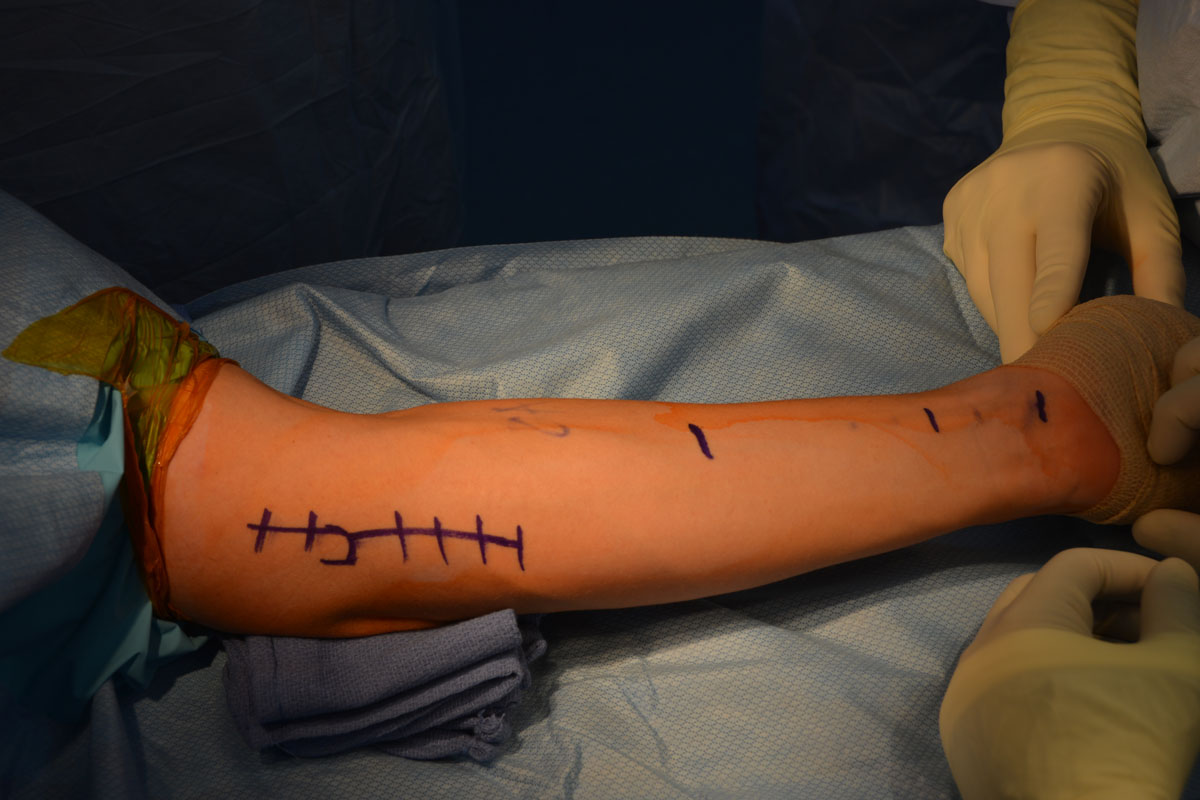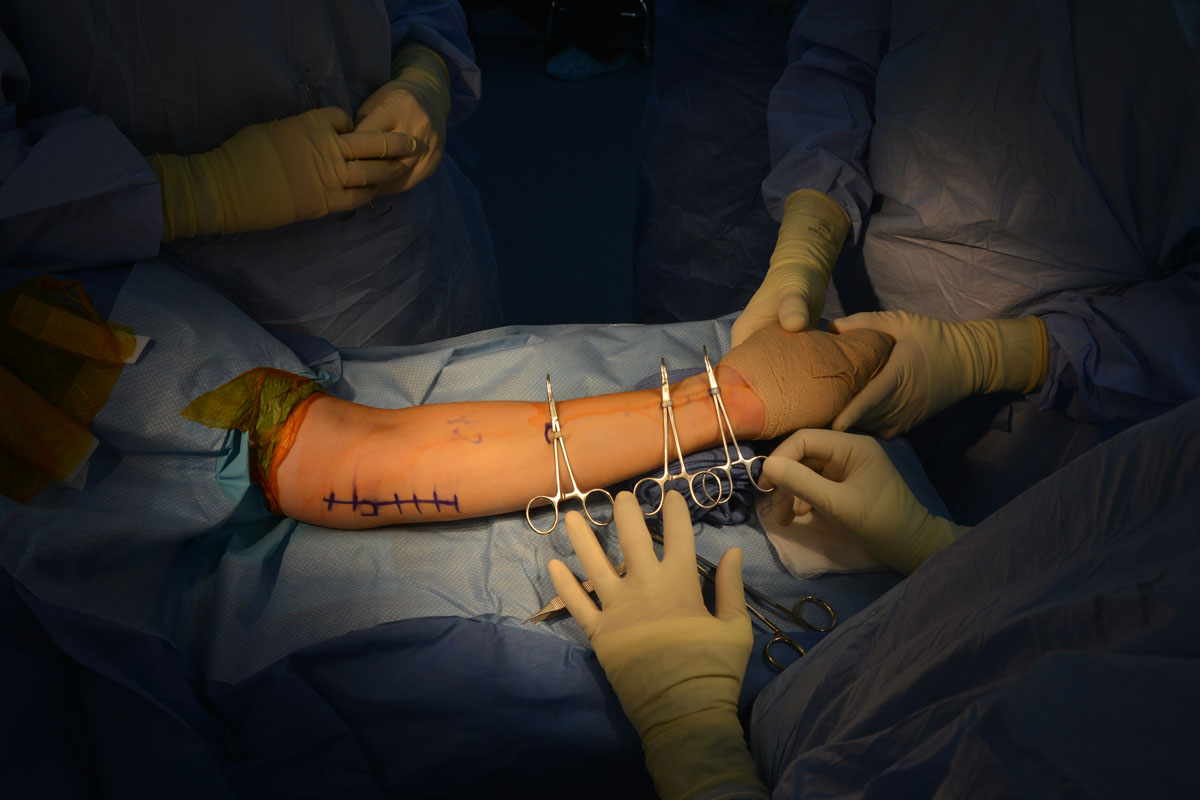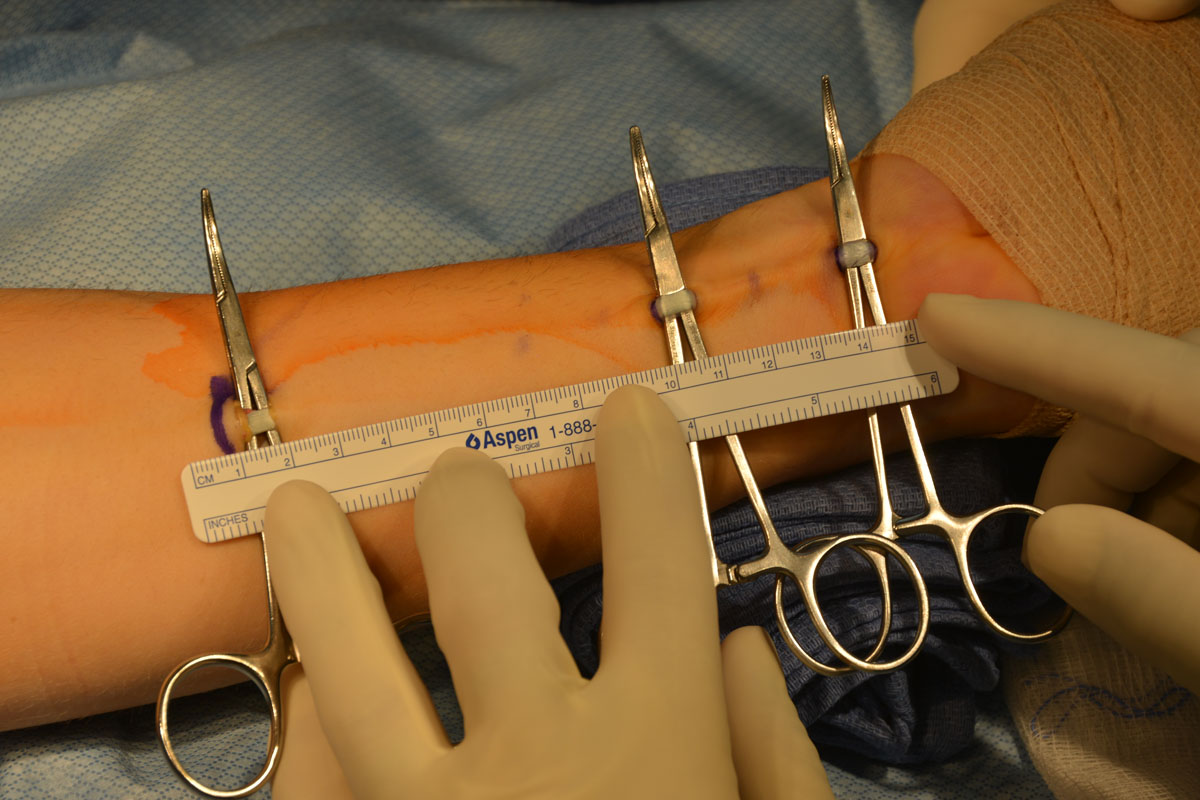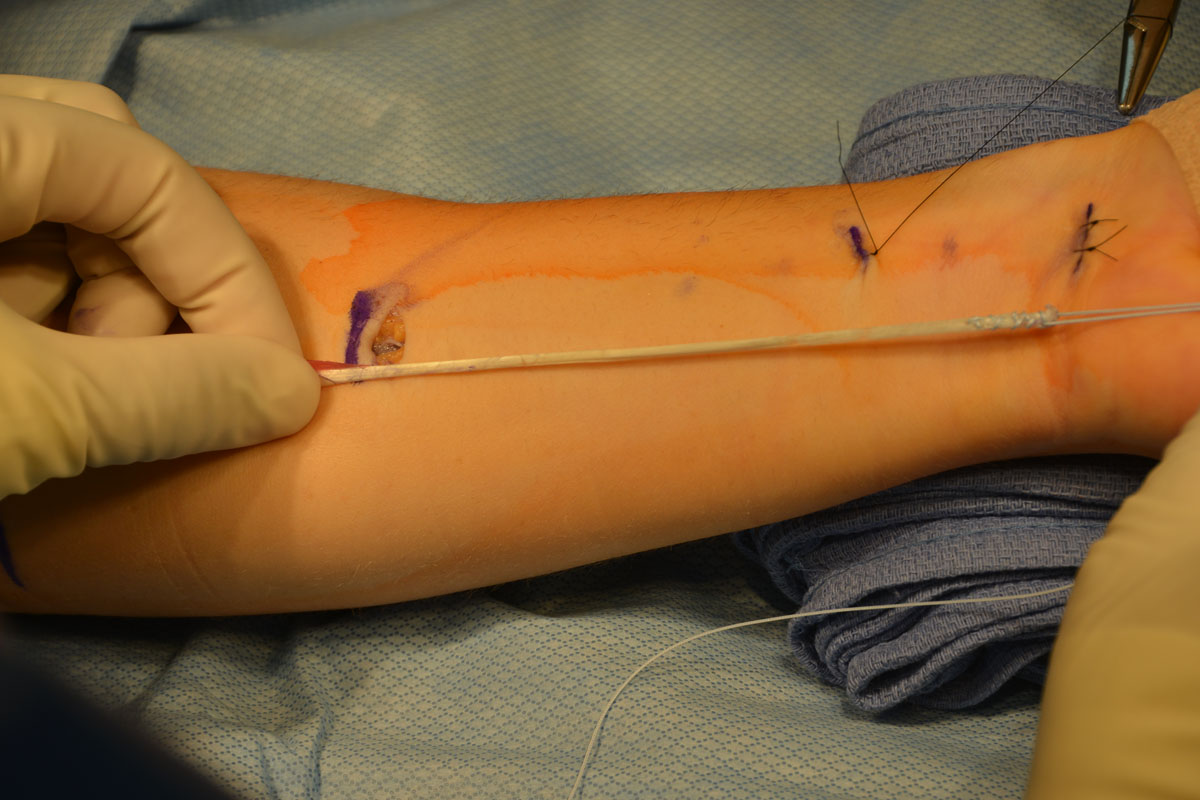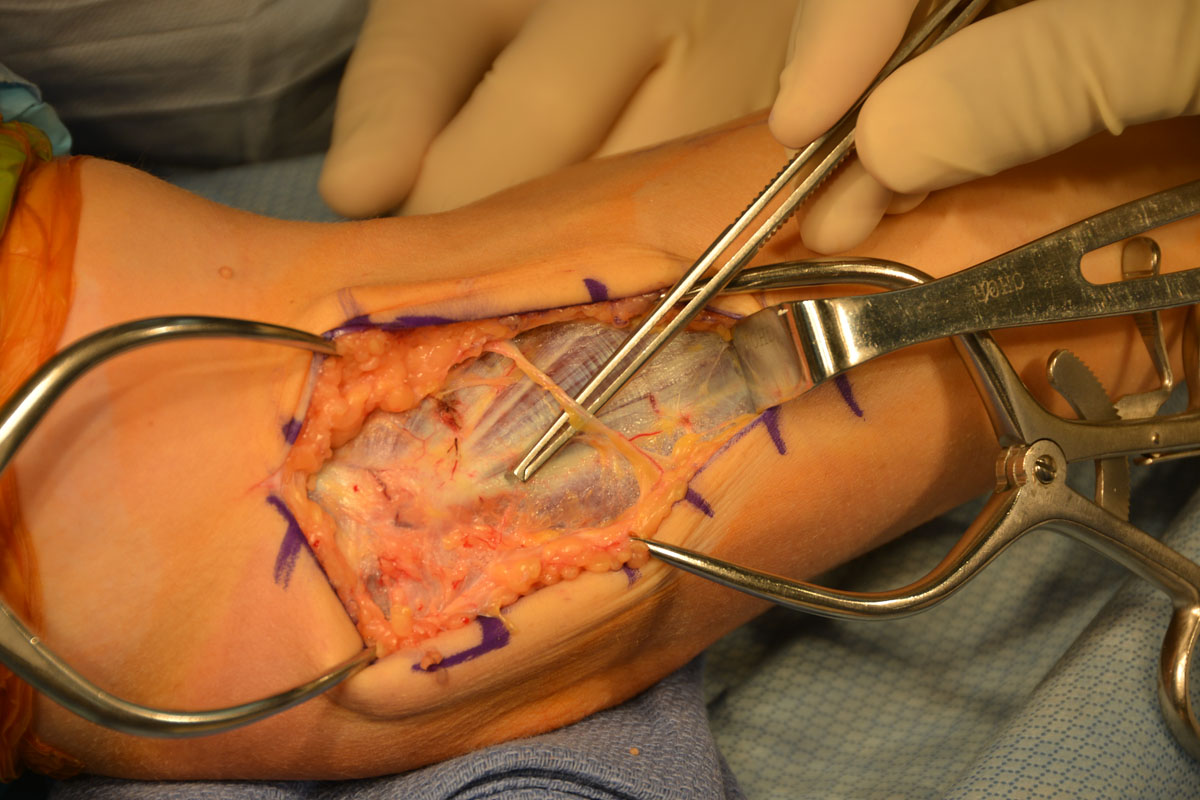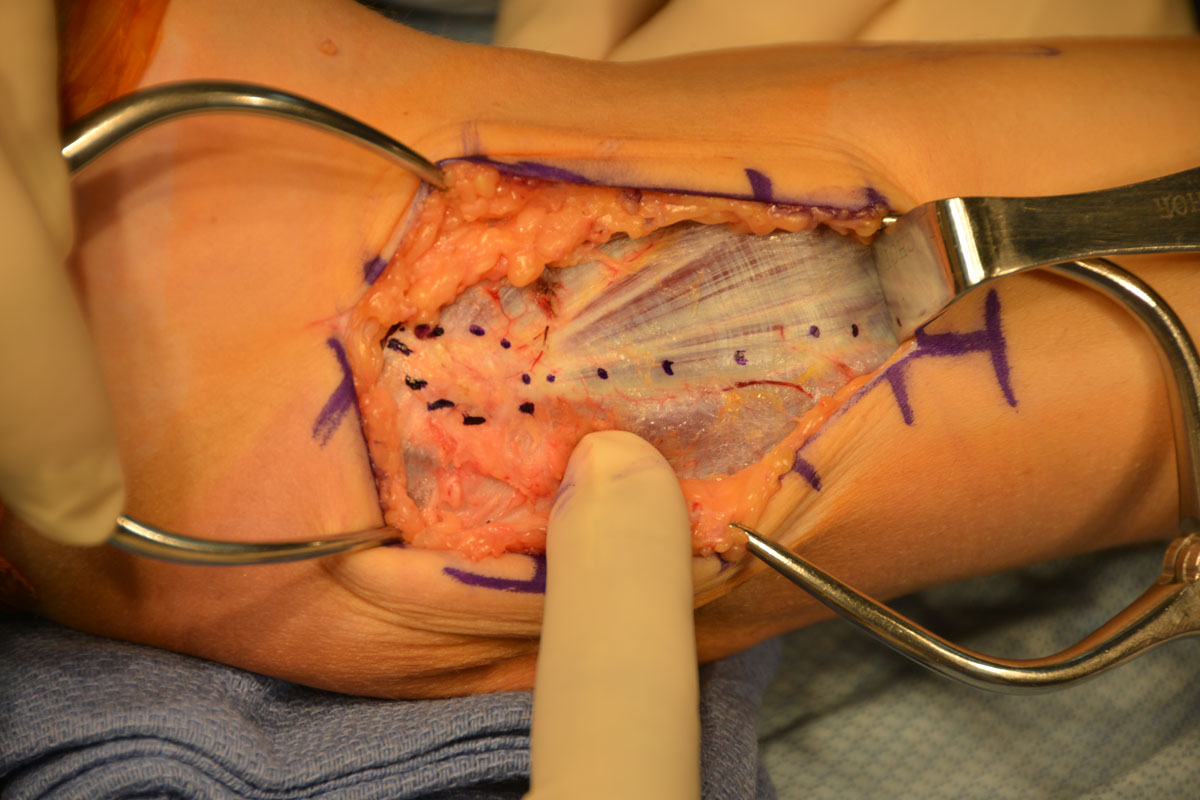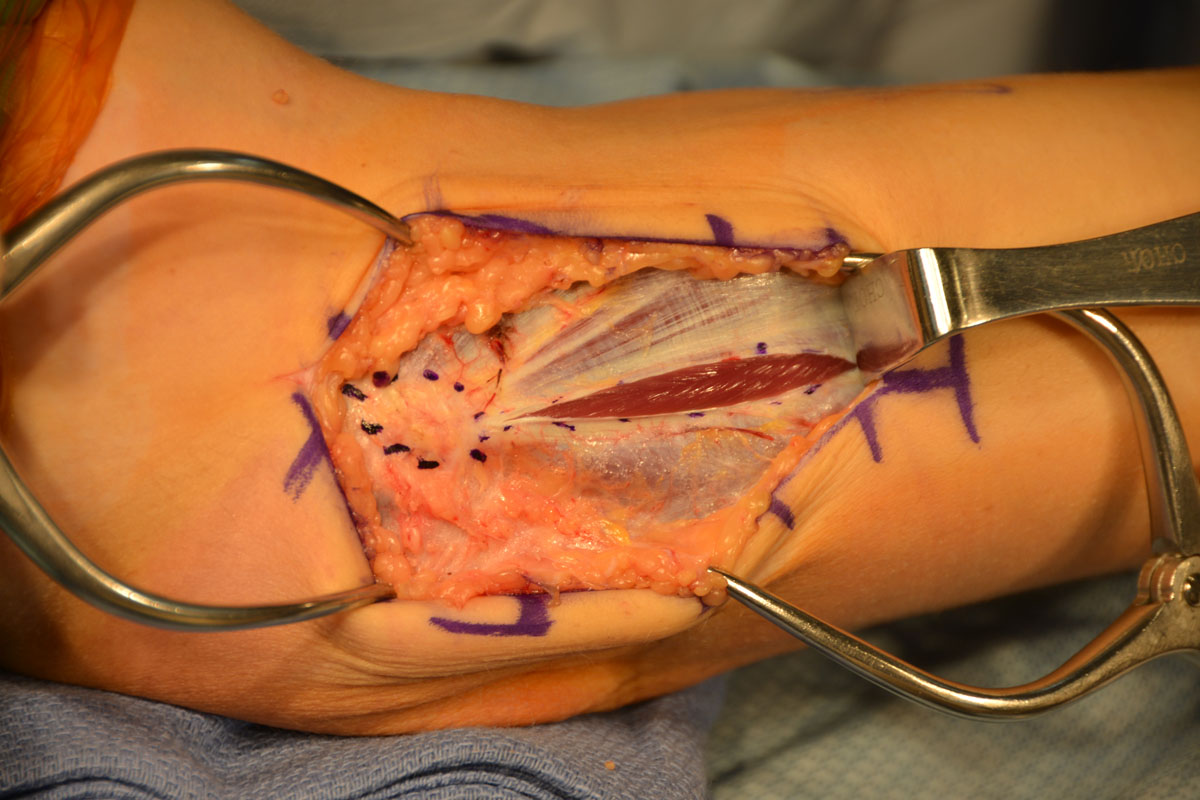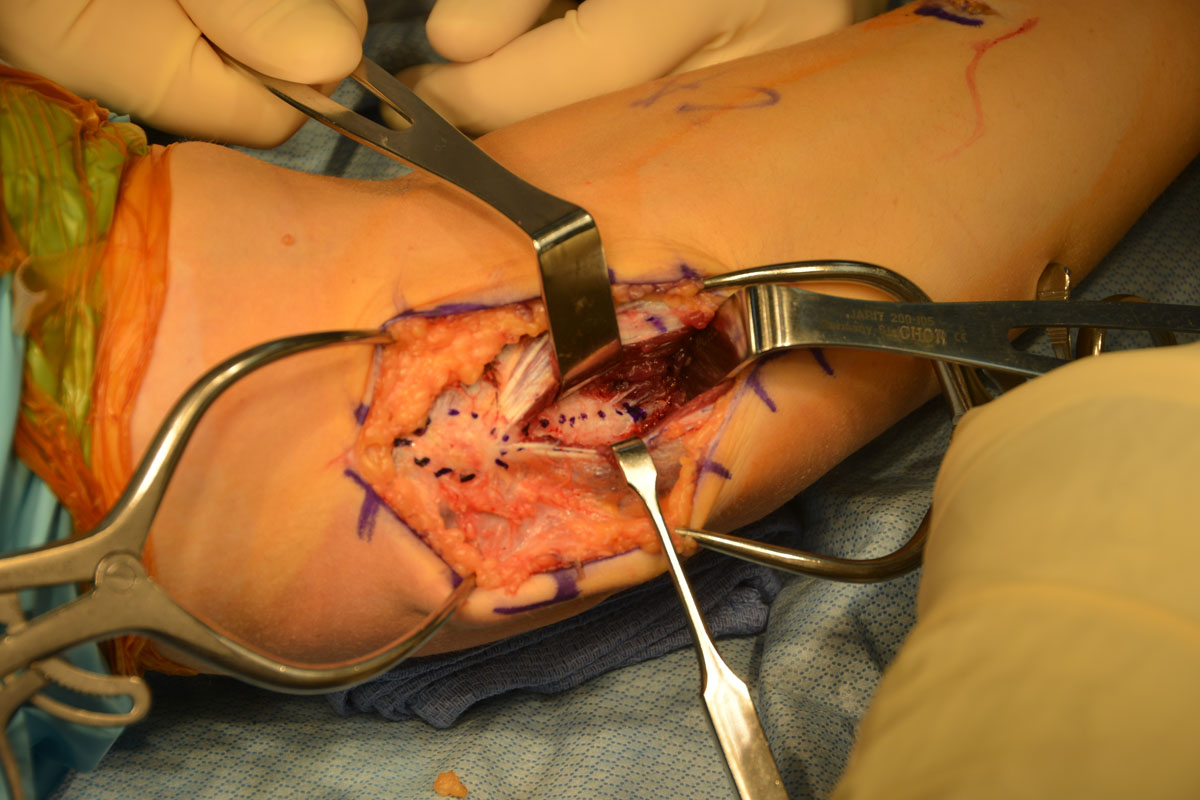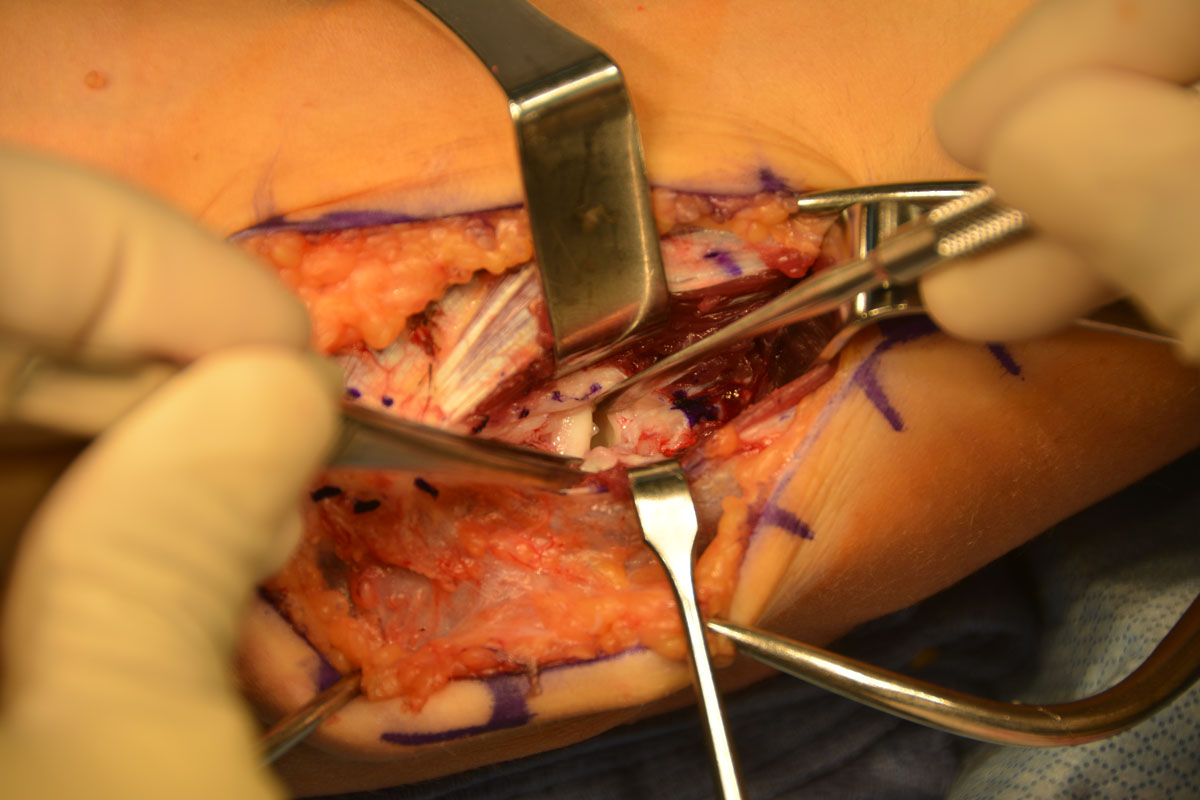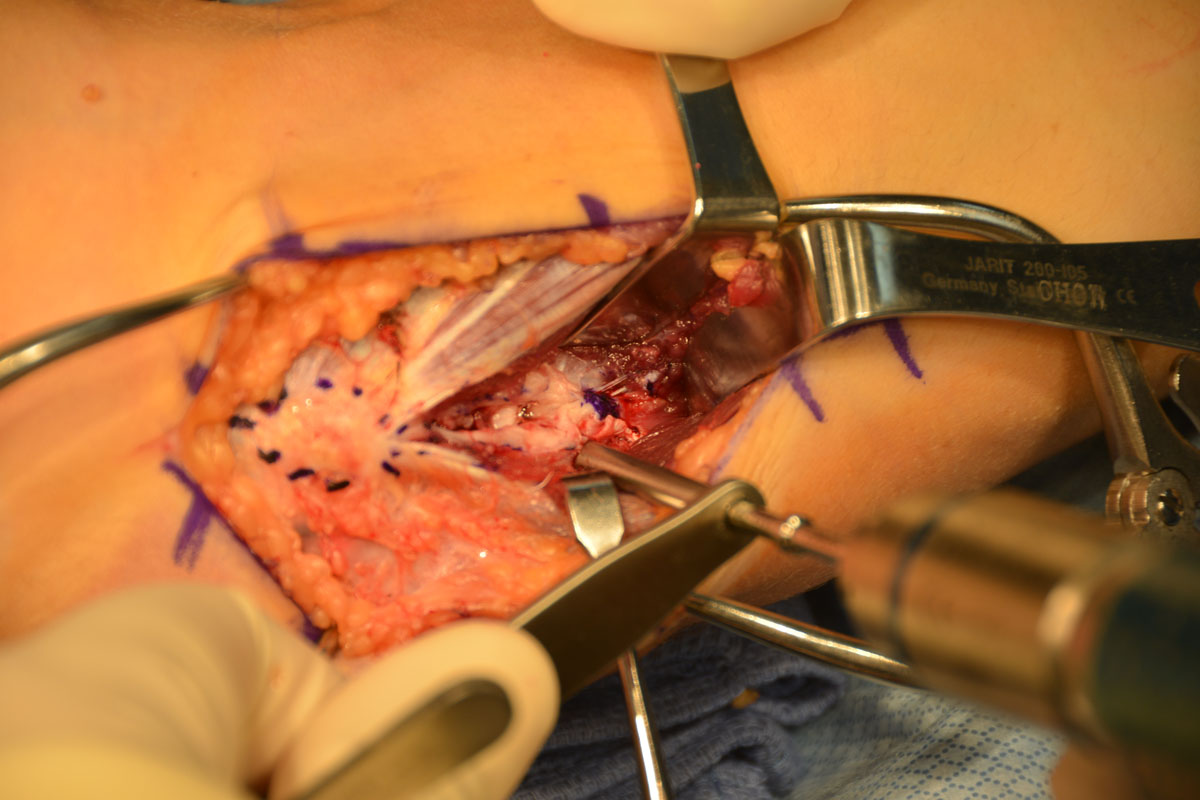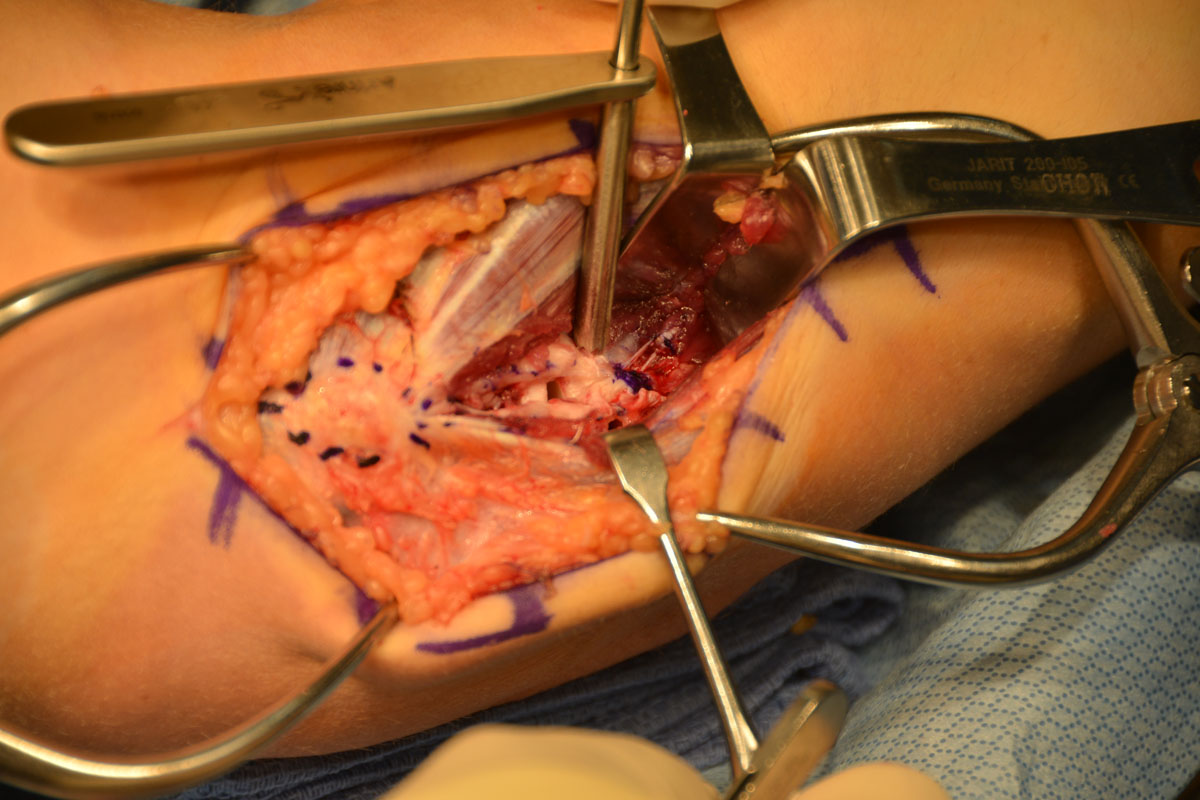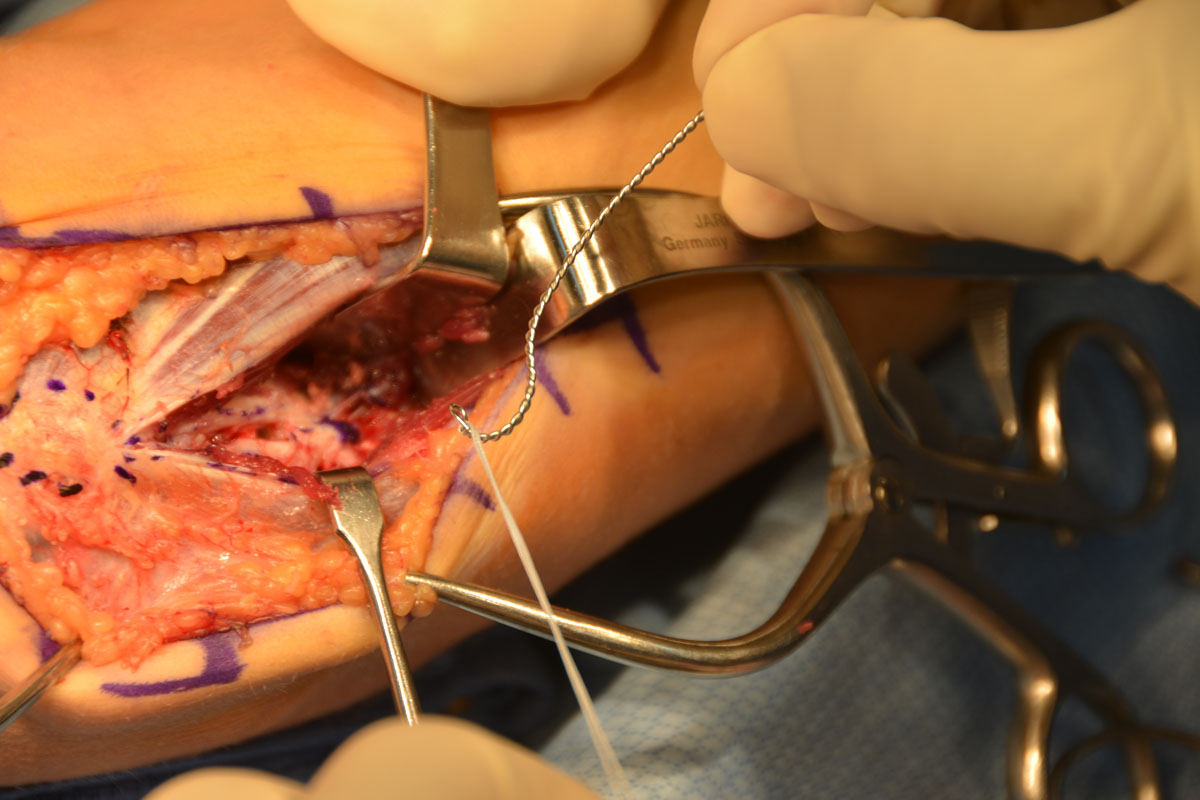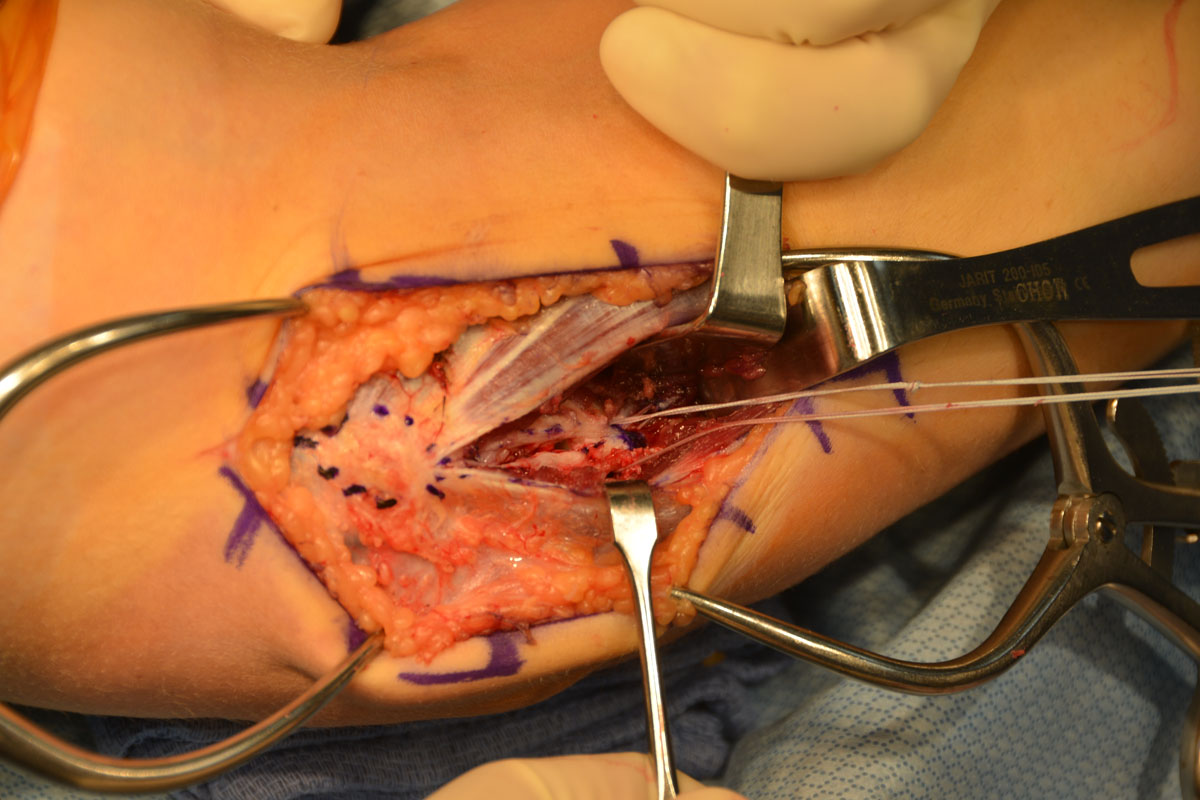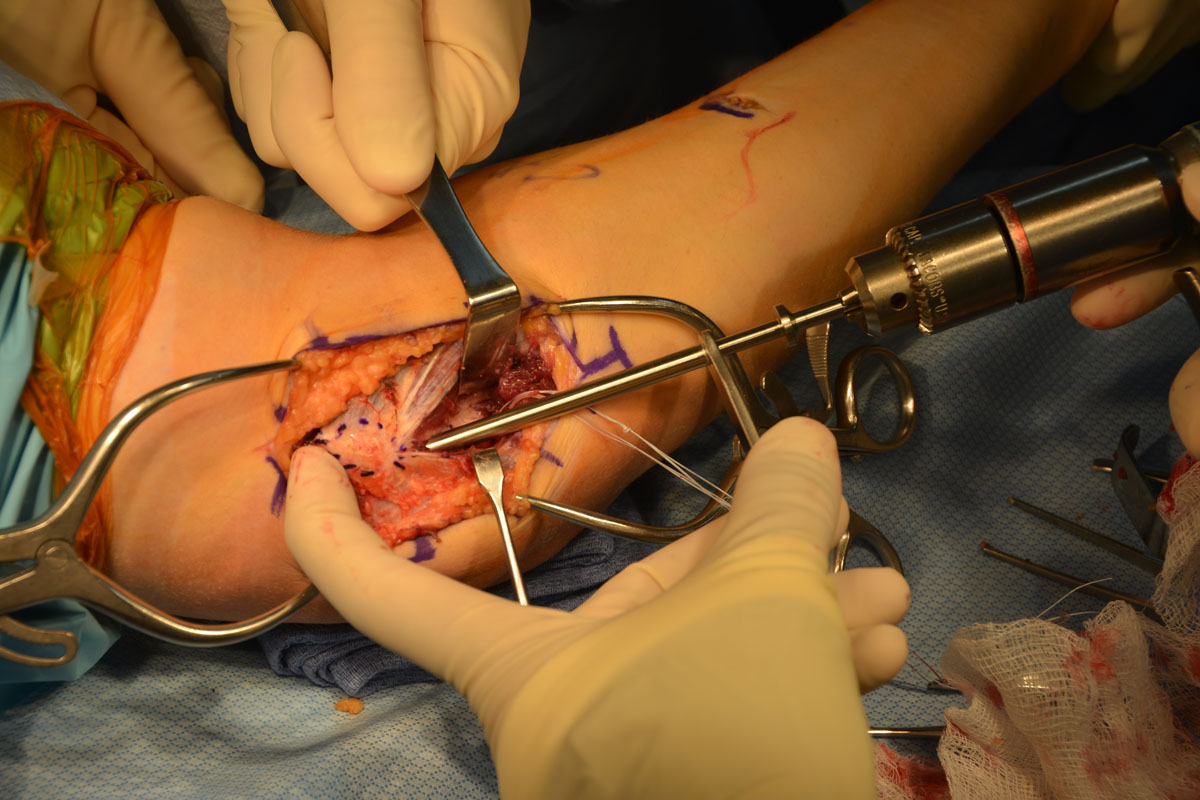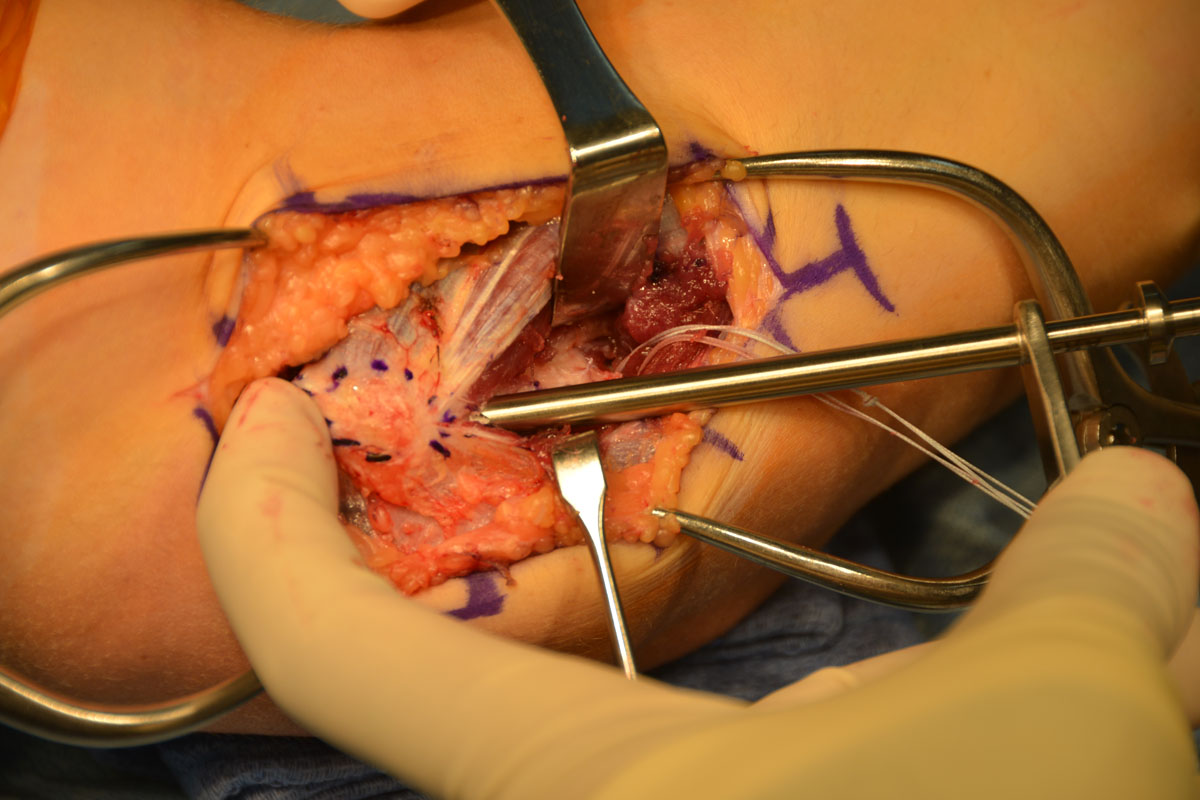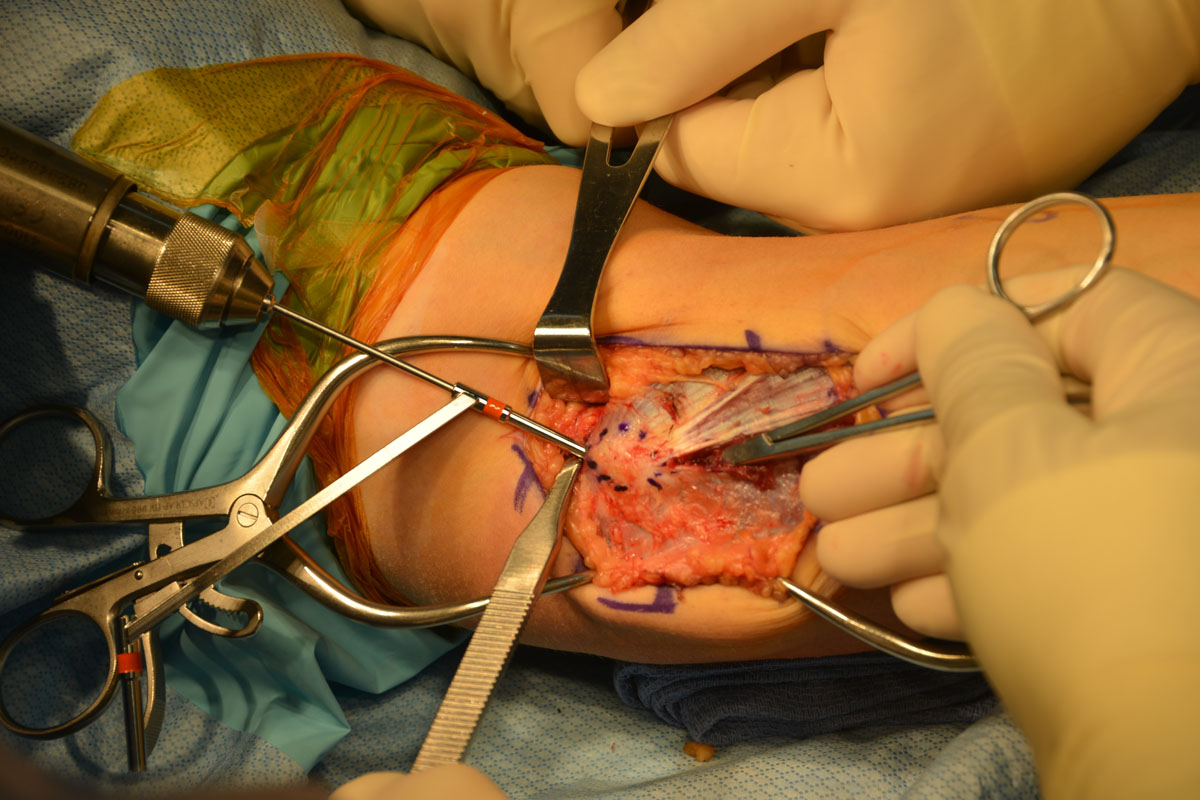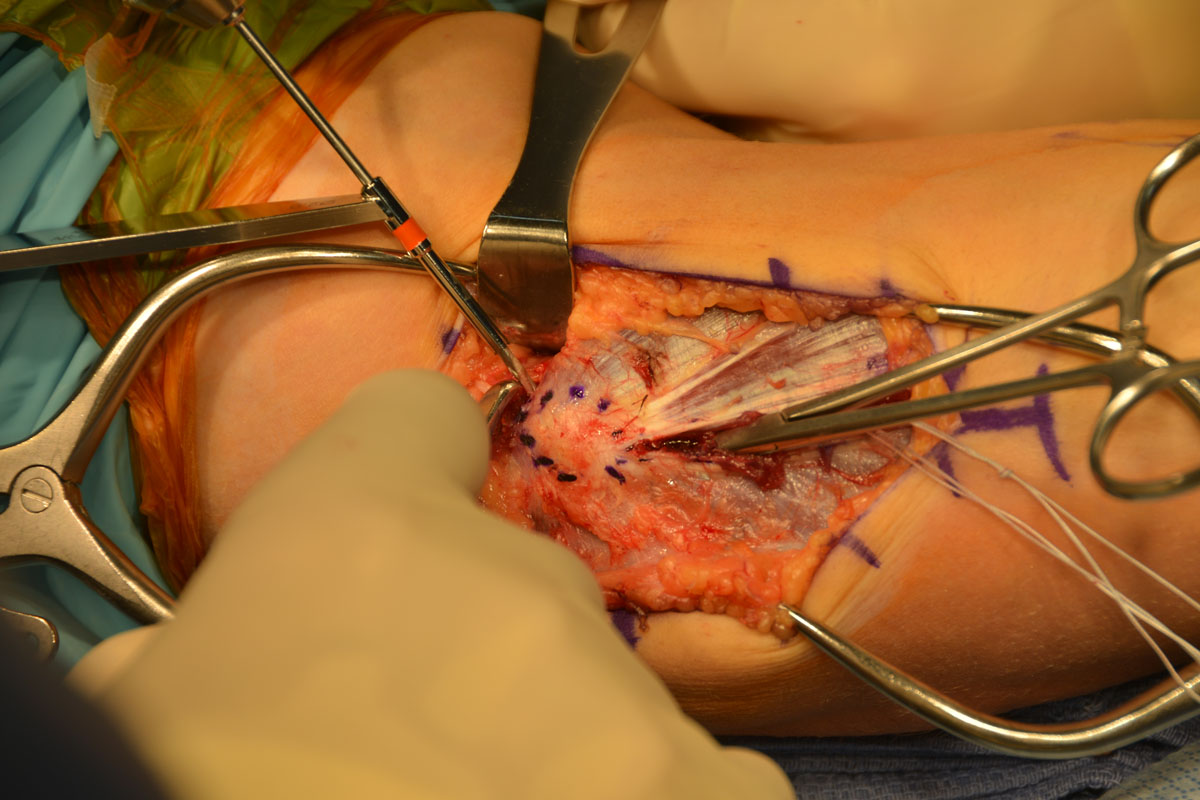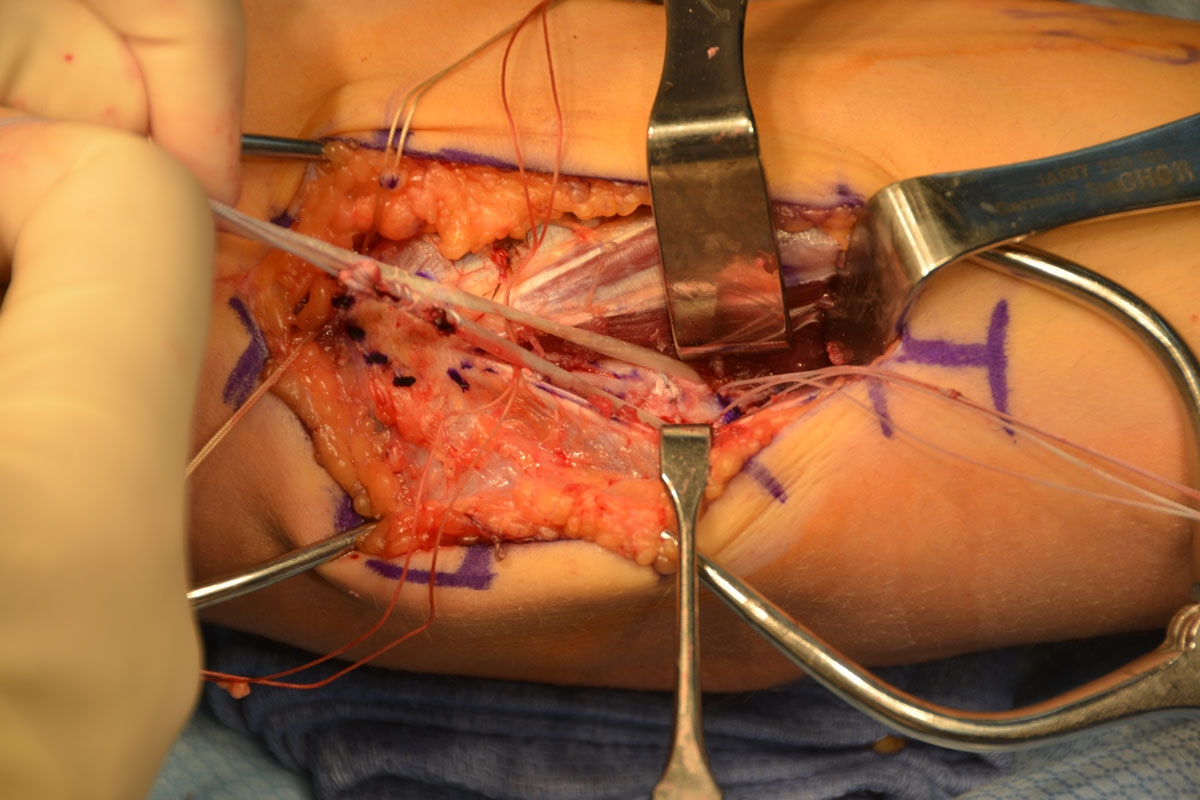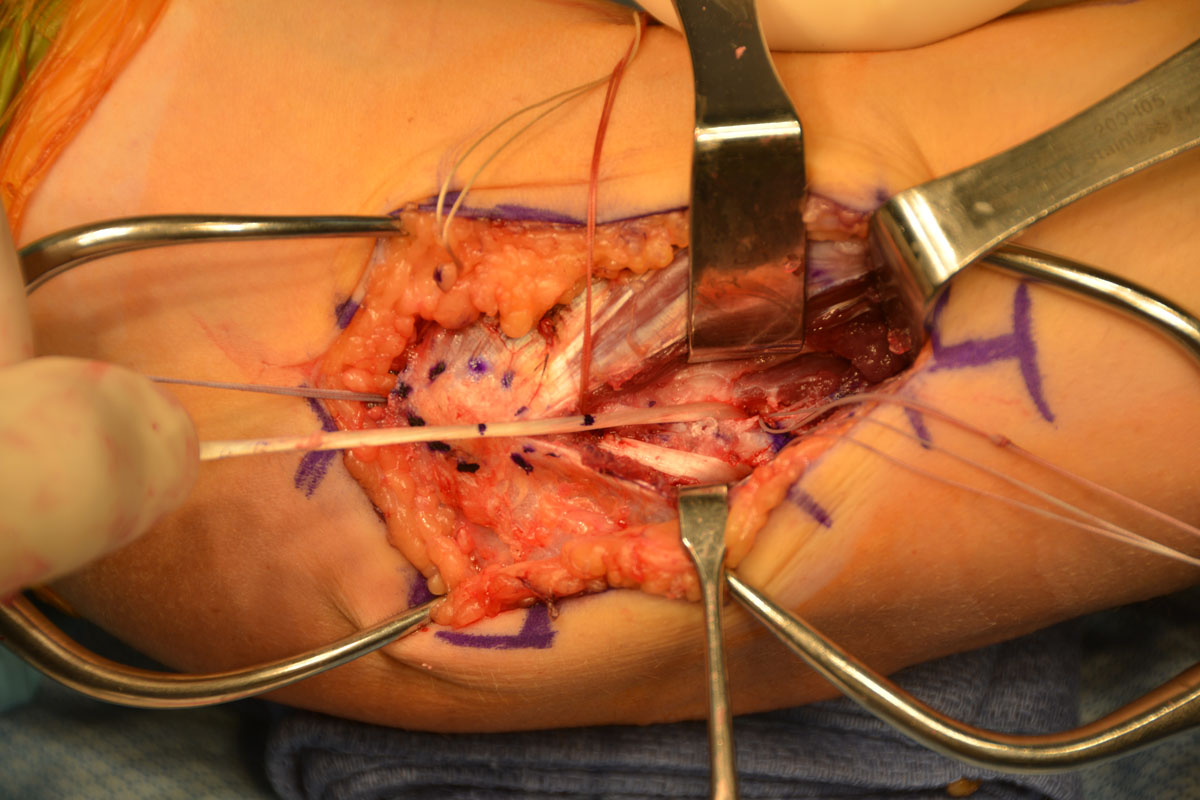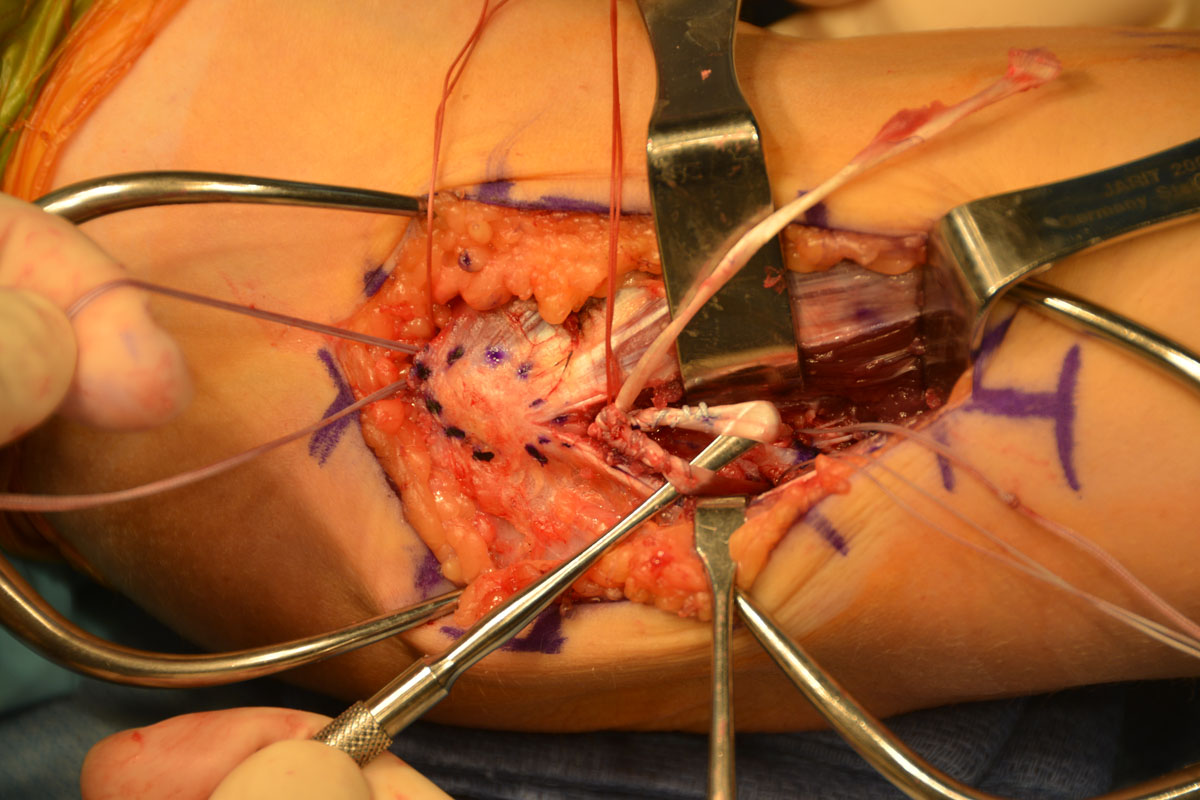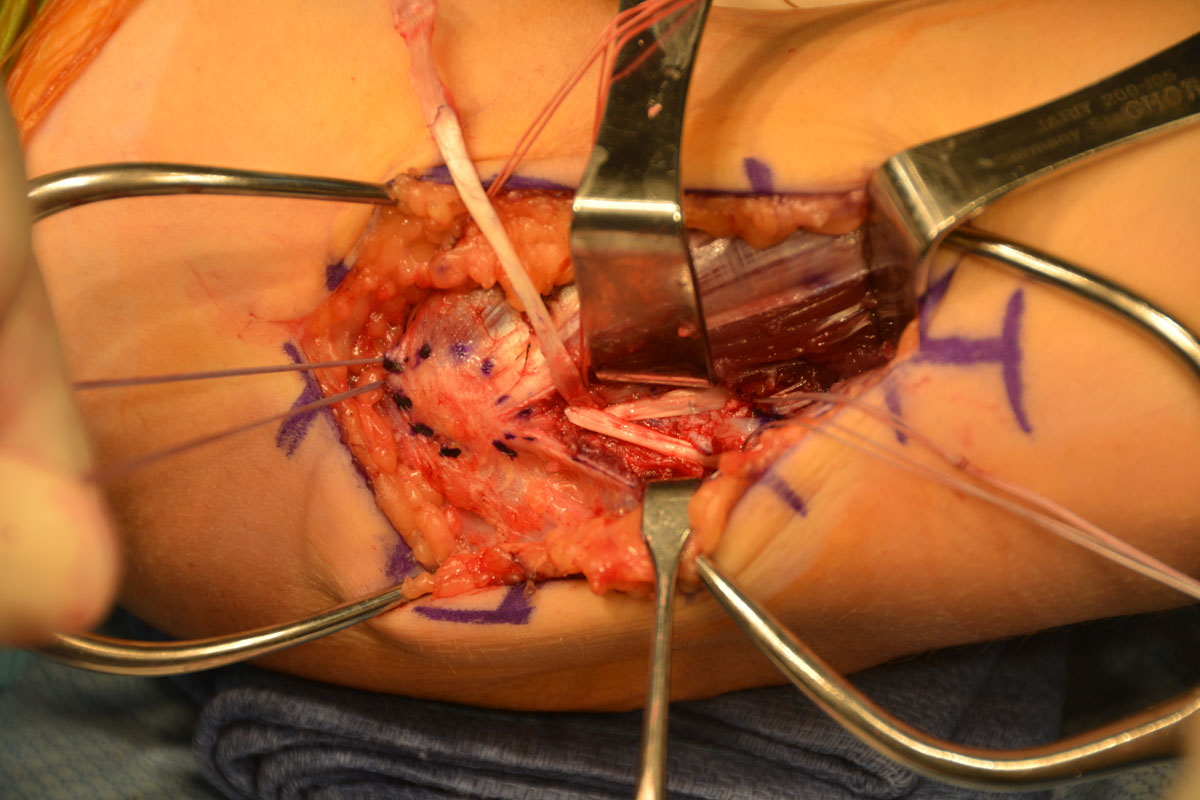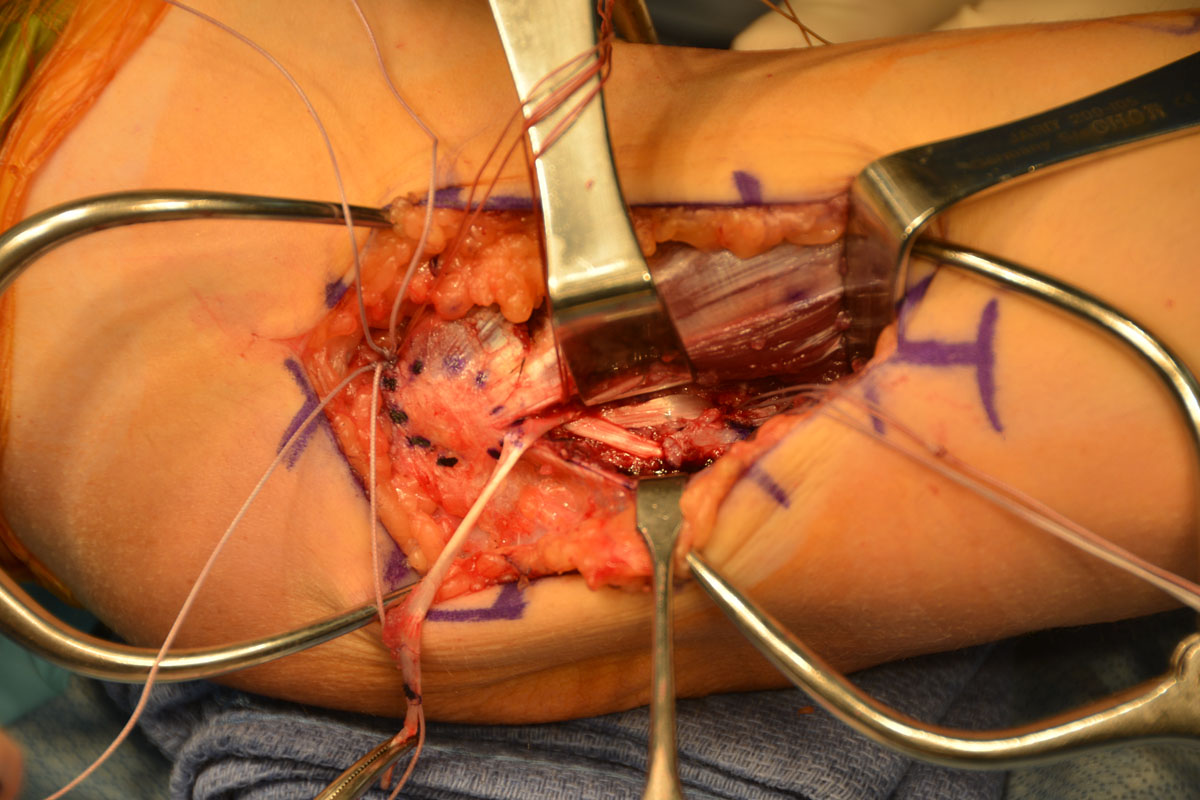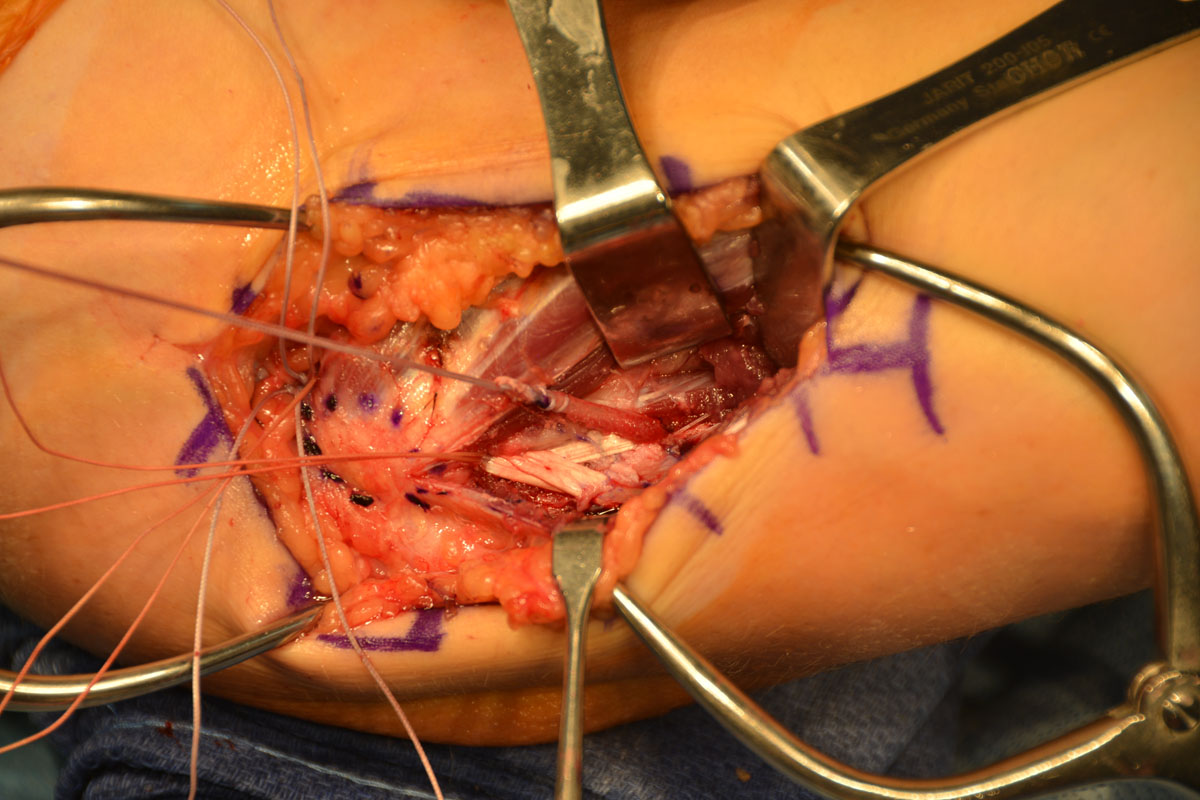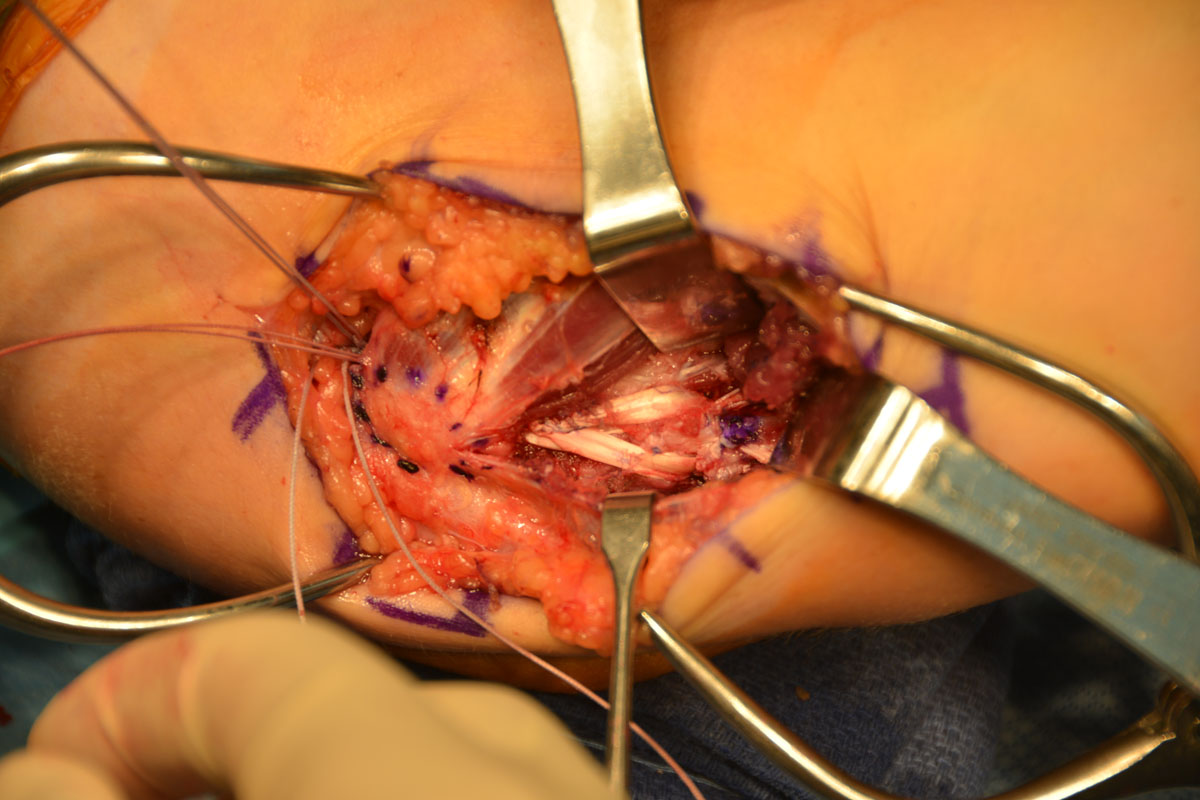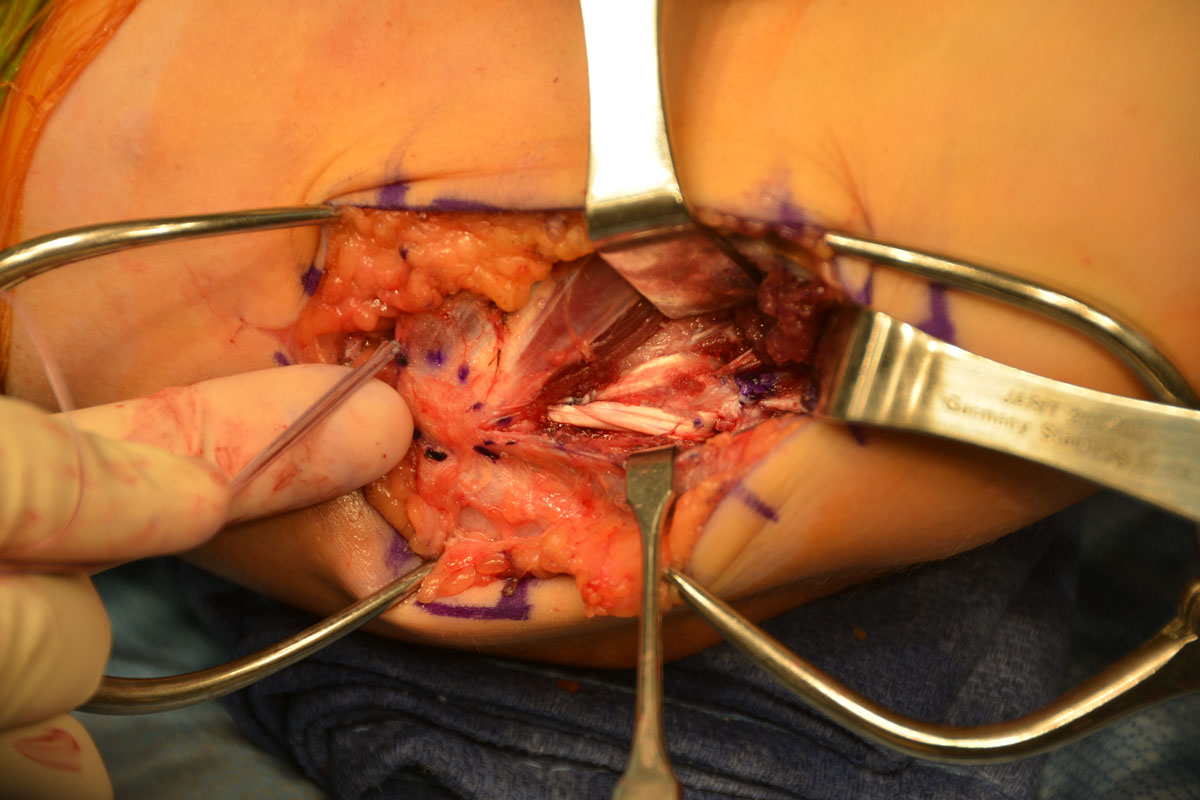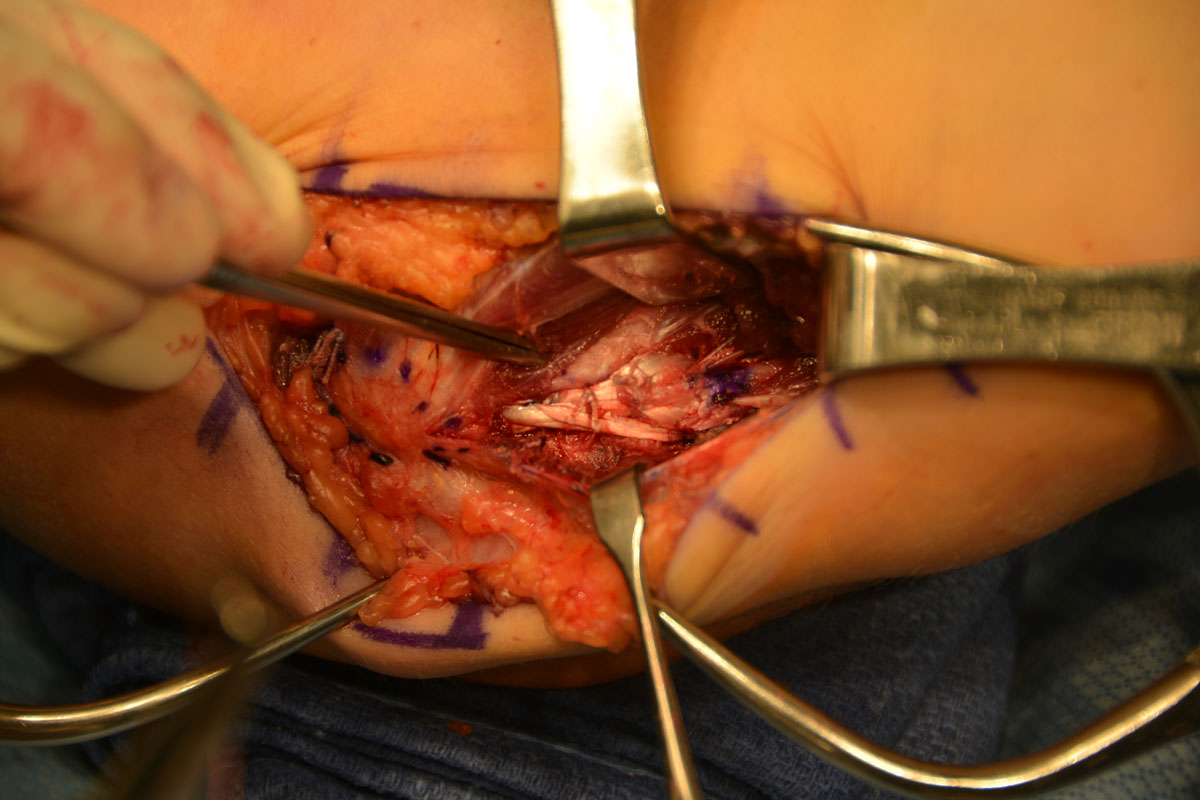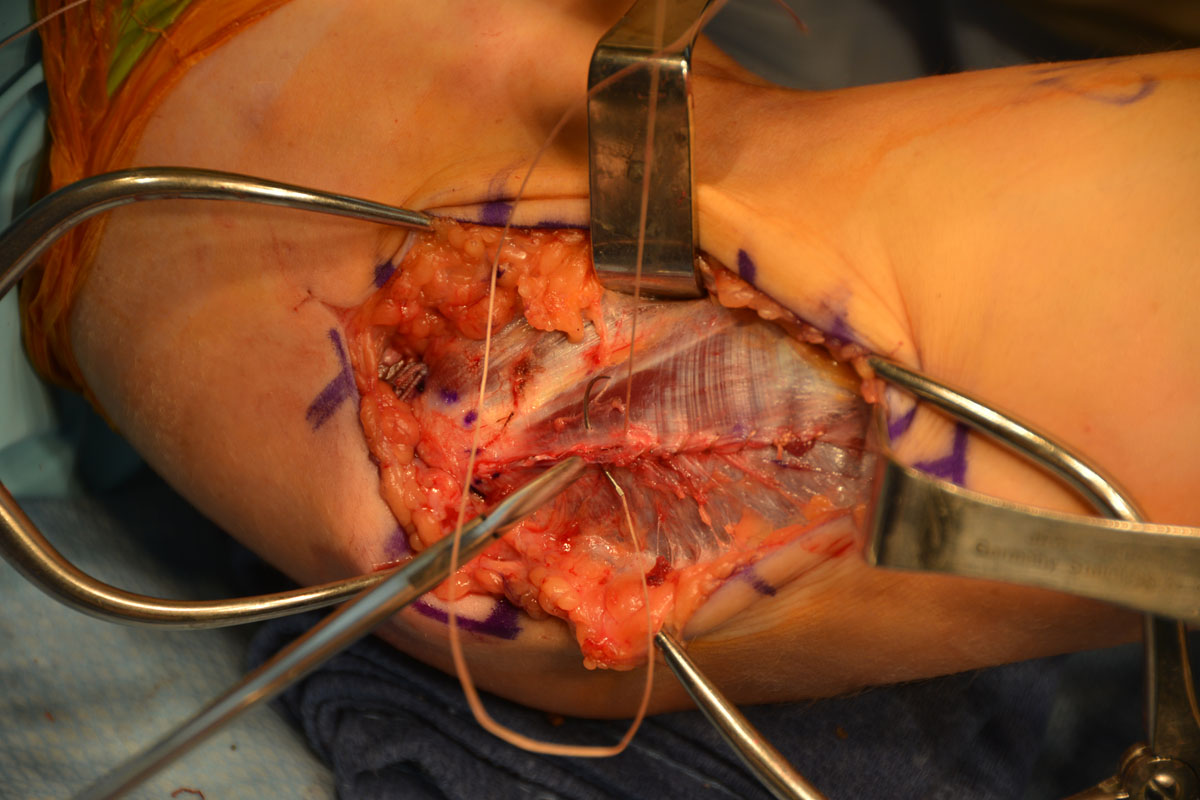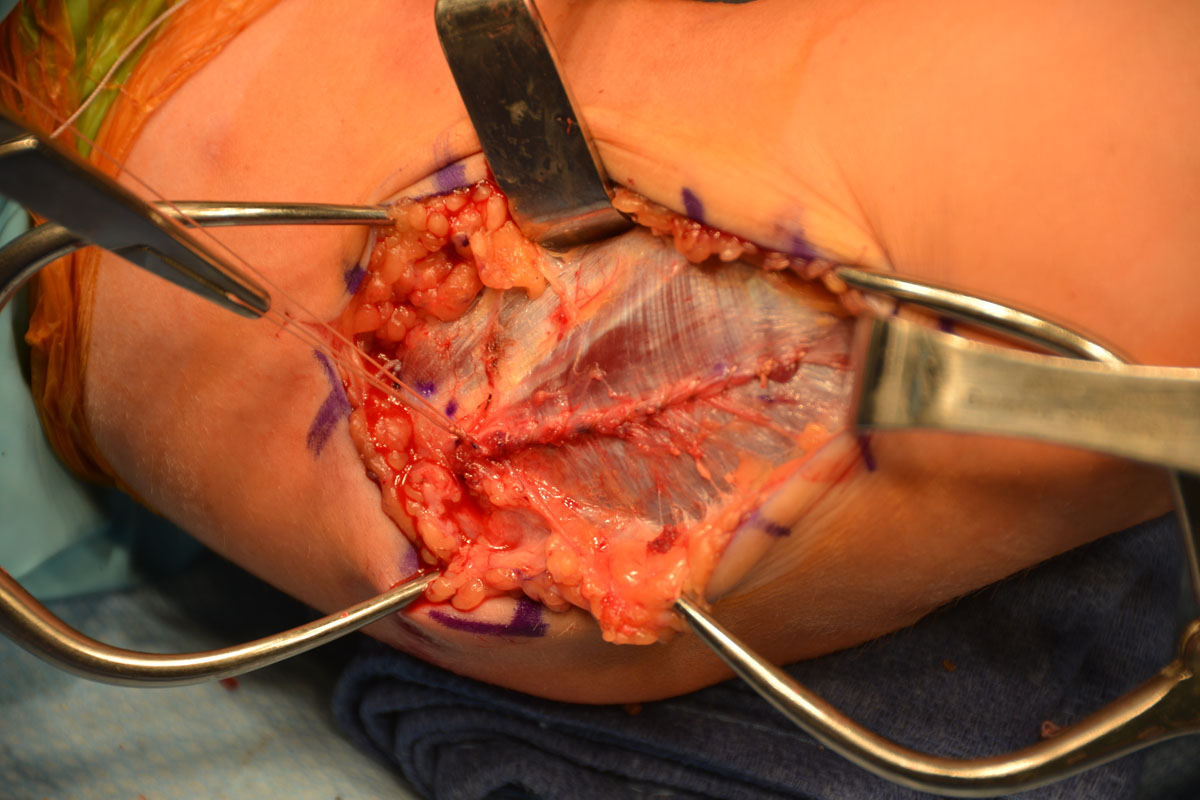Tommy John Surgery Explained
Tommy John Surgery Decisions
Once an athlete decides to go forward with Tommy John Surgery, the graft must be chosen. Tommy John Surgery requires transplanting a tendon graft to recreate or reconstruct the damaged UCL. Graft choice is either the palmaris longus tendon that exists in the forearm or the gracilus tendon from the knee. To learn more click here.
ANESTHESIA
Patients who undergo Tommy John Surgery have a comfortable experience with anesthesia. Regional anesthesia which is often referred to as a nerve block may be used to control discomfort after surgery. During surgery, light sedation or general anesthesia is commonly used for Tommy John Surgery. General anesthesia and local anesthetic to the graft harvest site can be added if a hamstring autograft is chosen.
POSITIONING
- In the operating room, the patient is lying on his or her back comfortably during the surgery.
- A tourniquet is placed on the arm to the small amounts of bleeding that may occur during surgery.
- Antibiotics are given and the patient’s arm is prepped and surgical drapes are placed for sterility.
GRAFT HARVEST
- The palmaris longus graft is harvested using three small incisions.
- The tendon is cut and strong suture material is placed in the end of the graft
FOUR STRANDS DOCKING TECHNIQUE
Exposure
- A skin incision is made and small nerves that supply sensation to the skin are identified and protected.
- The muscle of the forearm is then incised and spread apart to expose the underlying UCL. Care is taken to avoid excessive injury to the muscle.
- The UCL is then incised and inspected
- The UCL injury is then fully assessed.
Tunnels are Drilled for Weaving of the Graft
- A 3.5-mm drill is used to create two tunnels on the ulna bone that connect to each other.
- A suture is placed in the tunnels so later in the surgery the graft can be weaved through the tunnels.
- The upper humerus bone then has a 4.5 mm tunnel drilled at the normal attachment site of the UCL.
- Two separate 2 mm tunnels are then drilled to connect with the prior 4.5 mm tunnel.
- Suture loops are passed through each smaller tunnels for later docking of the graft.
The Injured UCL is also Repaired
- The incision in the native UCL is repaired with high strength suture. This adds additional strength to the UCL graft.
The Graft is Placed
- The graft is now weaved through the ulnar tunnels from front to back. One limb of the graft is then passed into the humeral tunnel and is tensioned which is referred to as “docked”.
- The length of the opposite graft limb is then accurately determined by laying the anterior limb over the top of the humeral tunnel. This graft limb is then marked and high strength suture placed in it.
- The second graft limb is then docked into the humeral tunnel.
- Depending on graft length, the graft sutures can then be passed through the native ligament and tied for a 3-strand graft or again passed through the humeral tunnel for a 4-strand graft.
- How many strands did you get?
- The muscle and skin are closed with sutures.

Tommy John surgery begins with an incision over the inside aspect of the elbow. The dissection is carried through the forearm tissues until the ligament is fully exposed. The ligament tear is confirmed and then strategy for the reconstruction is developed.
Once the ligament is identified and landmarks established, tunnels are created at the areas of bone where the UCL naturally attaches. These bone tunnels allow a graft to be weaved in tension.
The graft is weaved through the tunnels and then pulled on to create tension in the graft. Variations in surgical technique usually involve how the graft is fixed within the tunnels. One method to fix the graft is to suture the graft side to side. Another method is to use a docking technique where the graft is controlled with sutures, docked into a tunnel and tied over a bone bridge. A third method is to have the sutures controlling the graft sutured into the native ligament.
To make the graft stronger, I place 4 strands of graft across the elbow. Some techniques only use 2 strands. By using 4 strands, the final graft is larger and stronger! Read our blog How many strands did you get?
Dr. Ahmad prepares to perform Live Surgery
On July 11, 2019 Dr. Ahmad performed surgery to a live audience of sports medicine specialists at the American Academy of Orthopedic Surgeons held in Boston. To our knowledge this was the first ever live streaming of a Tommy John Surgery. Dr. Ahmad explained the surgery and answered questions during the procedure.
